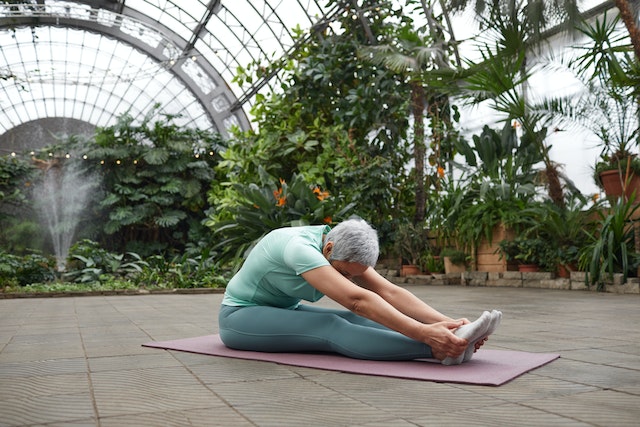
As a caregiver or someone looking to care for the elderly, you may wonder what you can do to help them stay healthy and active. After all, an active lifestyle can help reduce the risk of diseases such as diabetes. But, how can you encourage them to get up and move? The answer may be Yoga. Here are seven reasons why elderly people should try Yoga.
Enhanced Flexibility and Strength
Yoga helps to increase the range of motion in your elderly’s joints and muscles, which can help them regain strength after injuries or surgery. It also helps older people to build both upper-body and lower-body strength.
Here are some exercises for enhanced flexibility you can help your elderly with:
- Standing forward bend (Uttanasana)
- Triangle pose (Trikonasana)
- Warrior 2 pose (Virabhadrasana II)
Improved Balance and Stability
The elderly are always at risk of falling or tripping, leading to devastating consequences. By practicing balance, Yoga can be an effective way to help improve stability in older adults, making them less likely to fall over.
In addition, practicing Yoga improves balance by increasing awareness of the body’s position in space, which helps people keep track of where they are concerning other objects or people.
Relief from Mental Stress
Yoga can be very useful for the elderly because it helps them focus on breathing and relax their muscles. This reduces tension, which is one of the main causes of mental stress in older people. It also helps the elderly become more aware of their bodies and how they feel, which is important for staying healthy in their old age. Yoga has also been shown to improve memory and cognitive function, which is important for aging people.
Pain Management
Yoga is an excellent exercise for people beginning to experience the changes that come with aging. As mentioned above, it can help improve flexibility, strength, balance, coordination, and posture. This has been shown to reduce the risk of falls and fractures—common among older people—and improve overall health.
Furthermore, Yoga can also help in:
- Improving sleep quality: Many older people have trouble sleeping and experience chronic pain, often associated with a lack of sleep. Yoga can help improve your elderly’s nap time, which can help reduce pain and stress levels.
- Reducing the effects of depression and anxiety: Depression tends to be more common in elderly populations—and it’s also linked to chronic pain. Yoga is effective at reducing both depression and anxiety.
Helps Maintain Healthy Cholesterol
The elderly are at a higher risk of heart disease, which can be caused by high cholesterol levels. Yoga is one of the best ways to lower your elderly’s LDL (bad) cholesterol levels. It also helps maintain healthy levels of HDL (good) cholesterol and triglycerides, which are both linked to heart disease risk.
Fun Exercise
Yoga is a fun way to stay active and healthy, especially for older people who might not enjoy traditional exercise. It’s also an excellent form of low-impact exercise that can help improve balance and flexibility in seniors.
Improves Blood Flow and Circulation
Yoga increases the elasticity, flexibility, and strength of your elderly’s veins, capillaries, and arteries, which helps maintain healthy blood pressure levels. This improves blood flow and circulation, which can, in turn, reduce the risk of heart attack, stroke, and other cardiovascular problems.
Final Word
With the many benefits of Yoga, it is easy to see why every elder should do it. As they get stronger and more flexible, they would love to be in a state where they can live longer and more fulfilling lives. We hope this blog post was helpful.

